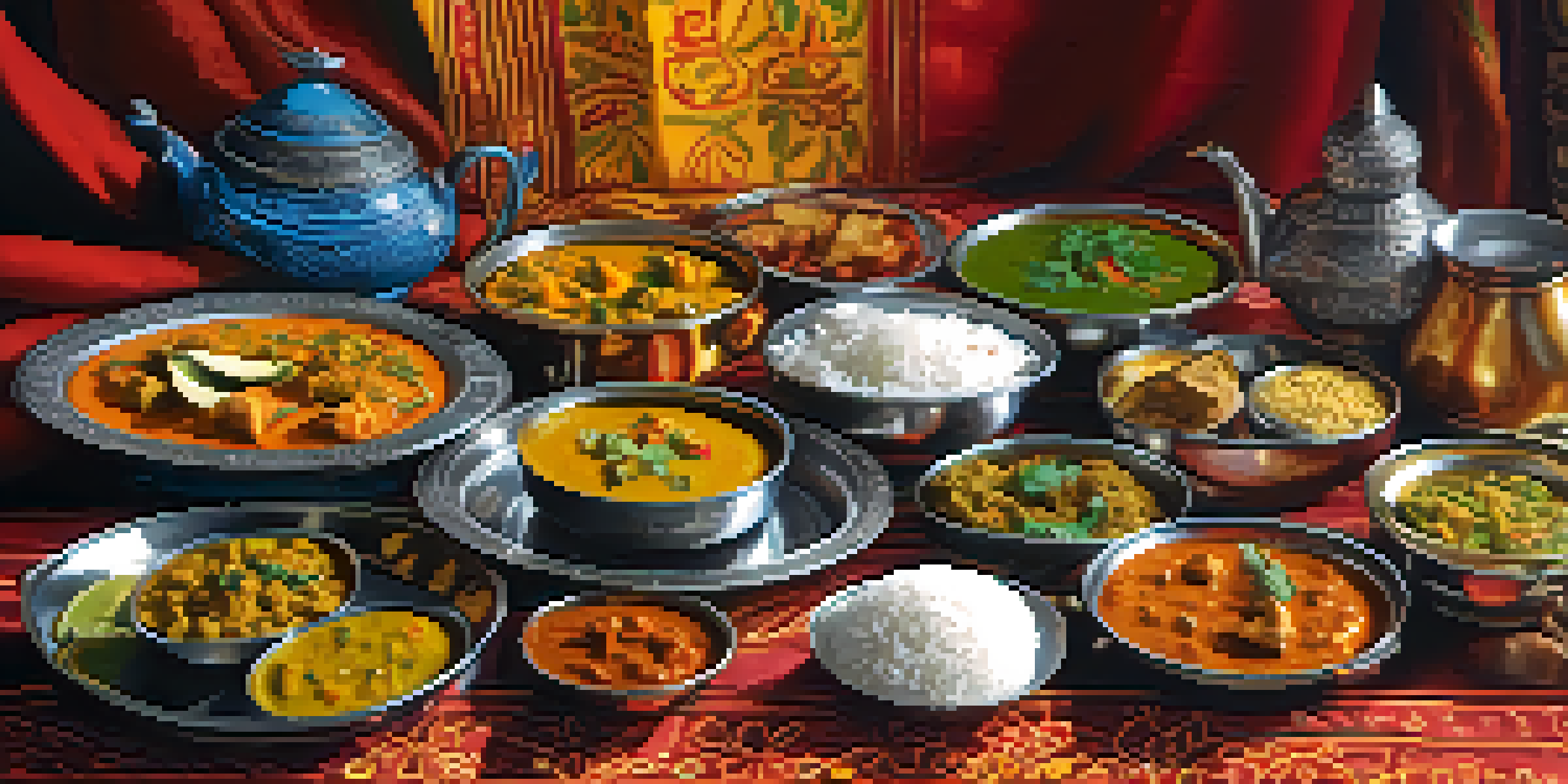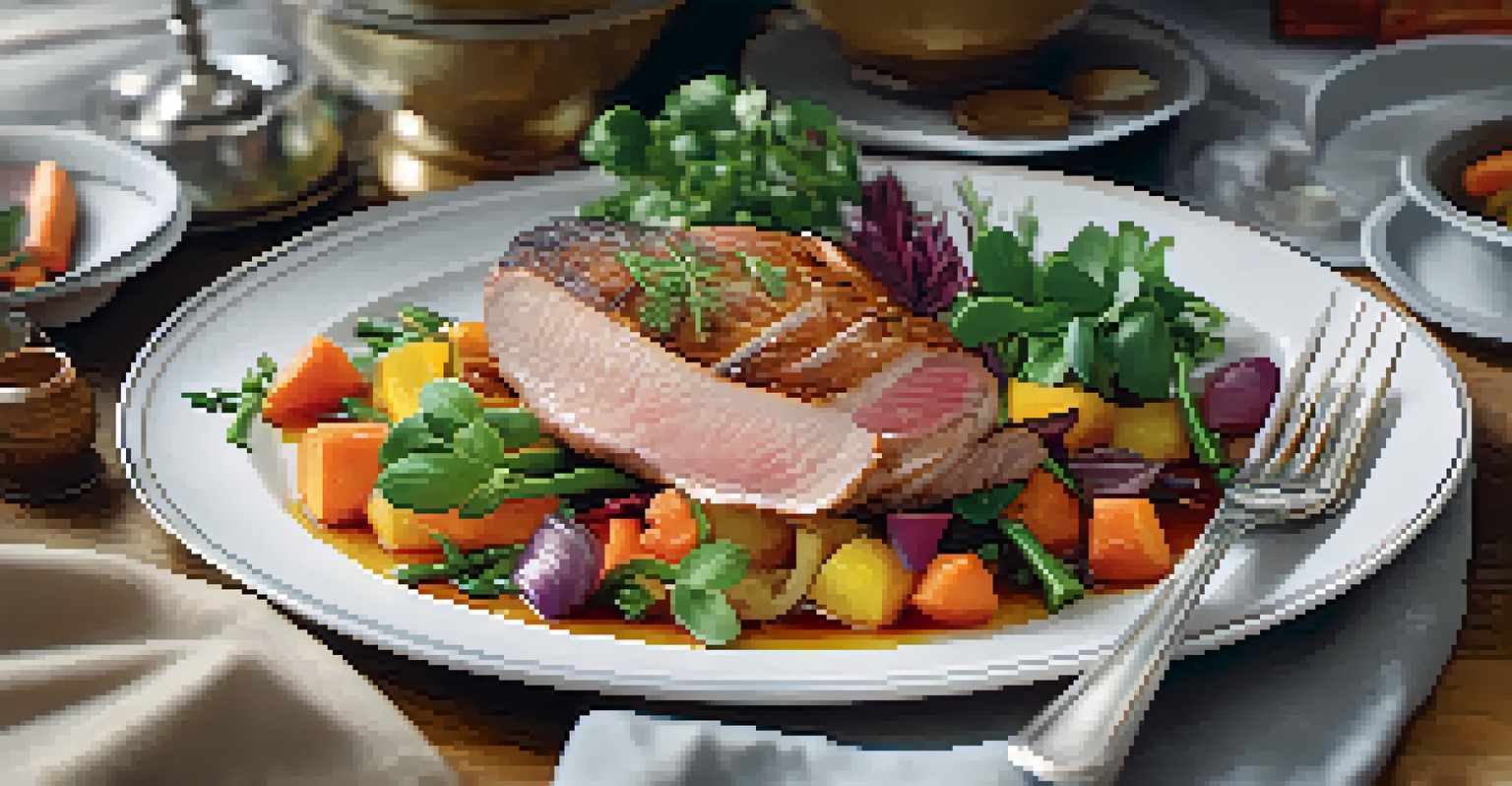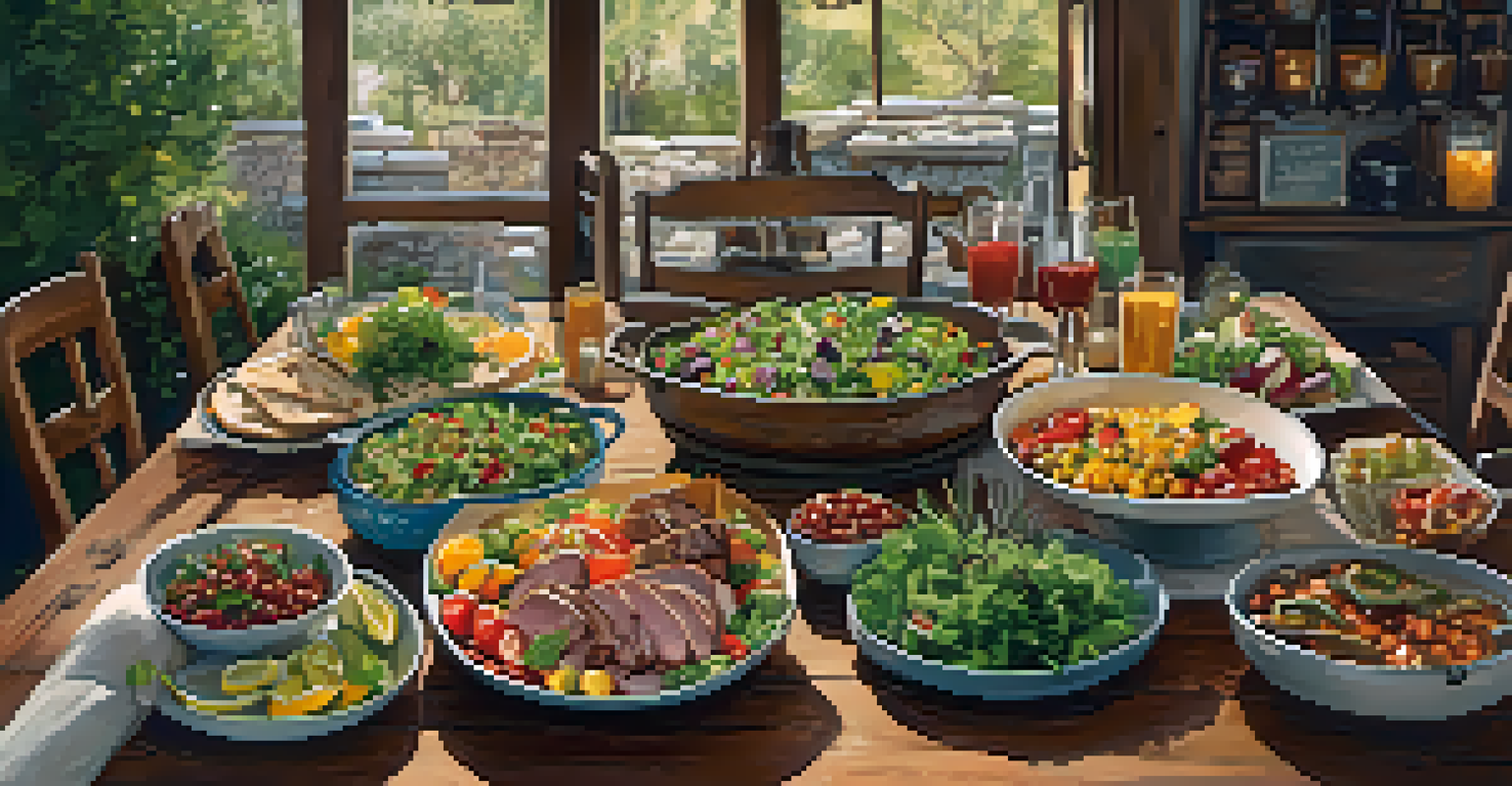The Role of Culture in Shaping Culinary Presentation Styles

Understanding Culinary Presentation and Its Importance
Culinary presentation refers to the art of arranging food in an appealing way. It's not just about taste; how a dish looks can significantly enhance the dining experience. For many cultures, presentation is a reflection of tradition and values, making it an essential aspect of culinary arts.
Food is not just what we eat; it is how we feel. The presentation of food plays a crucial role in how we perceive its taste and quality.
Different cultures have unique standards for food presentation, which can include color combinations, plating techniques, and garnishing. For example, Japanese cuisine often emphasizes simplicity and balance, highlighting the natural beauty of ingredients. In contrast, many Western styles may focus on elaborate arrangements and vibrant colors.
Ultimately, the way food is presented can communicate stories and cultural significance. This means that culinary presentation is not only about aesthetics but also about conveying emotions and cultural identity through food.
Cultural Influences on Food Presentation Styles
Every culture brings its own flair to food presentation, shaped by history, geography, and tradition. For instance, in French cuisine, the emphasis on precision and elegance is evident in the meticulous way dishes are plated. This approach reflects a long-standing tradition of culinary artistry.

On the other hand, Mediterranean cuisines might prioritize freshness and abundance, arranging dishes that showcase a variety of colors and textures. This can be seen in the vibrant spreads often laid out in communal dining settings, emphasizing sharing and social interaction.
Culinary Presentation Enhances Experience
The way food is arranged not only influences taste perception but also enhances the overall dining experience.
These influences highlight the fact that food presentation is deeply intertwined with cultural values, showcasing not just the food itself but also the heritage and beliefs of the people who prepare it.
The Role of Rituals in Culinary Presentation
In many cultures, food presentation is not just about aesthetics but also about rituals and traditions. For example, during festive occasions, the way food is presented can carry significant meaning. In Indian culture, thalis, or traditional meal platters, are beautifully arranged to symbolize harmony and abundance.
The plate is a canvas, and the food is the paint. Presentation is an important part of the dining experience.
Similarly, in Chinese culture, the presentation of food often involves specific arrangements that signify prosperity and good fortune. For instance, a whole fish is typically presented with its head facing the guest as a symbol of respect and hospitality.
These rituals add layers of meaning to culinary presentation, transforming a simple meal into a celebration of culture and community.
Modern Influences on Culinary Presentation
In today's globalized world, culinary presentation styles are increasingly influenced by modern trends and technology. Social media platforms like Instagram and TikTok have changed the way chefs and home cooks think about plating. Dishes are often designed not just for taste but also for visual impact, appealing to a wider audience online.
This blending of cultures and styles can lead to exciting new presentation techniques. Fusion cuisine, for example, combines elements from different culinary traditions, resulting in unique dishes that showcase a mash-up of flavors and presentations.
Cultural Influences Shape Presentation
Different cultures have unique standards for food presentation, reflecting their traditions, values, and communal practices.
However, while modern influences can enhance creativity, it's essential to remember the roots and traditions behind these presentation styles. Balancing innovation with cultural authenticity is key to meaningful culinary expression.
Seasonal and Regional Variations in Presentation
Just as ingredients change with the seasons, so do presentation styles. Many cultures use seasonal produce to inspire their culinary presentations, creating dishes that reflect the time of year. For example, autumn dishes might feature earthy tones and rustic presentations, while spring dishes could showcase bright colors and fresh herbs.
Regional variations also play a significant role in culinary presentation. In the southern United States, for instance, food is often served in generous portions, emphasizing comfort and hospitality. In contrast, fine dining in urban areas may focus on minimalism and sophistication.
These variations demonstrate how local ingredients and cultural contexts shape the way food is presented, making each dining experience unique.
The Psychology of Food Presentation
The way food is presented can significantly influence diners' perceptions and experiences. Studies show that visually appealing dishes can enhance flavor perception, making food taste better. This psychological aspect of food presentation means that chefs and home cooks alike must consider how their plates look.
For example, a dish served on a brightly colored plate can create a sense of excitement and anticipation. Conversely, dull or chaotic presentations might lead to a less enjoyable dining experience, regardless of the food's taste.
Modern Trends Redefine Food Aesthetics
Social media and technological advancements are driving new trends in culinary presentation, blending styles and encouraging creativity.
Understanding this psychology can help culinary professionals refine their presentation styles, ensuring that each plate not only tastes good but also delights the eyes.
The Future of Culinary Presentation Styles
As we look to the future, culinary presentation styles are likely to continue evolving. With advancements in technology, such as 3D printing and molecular gastronomy, chefs have more tools at their disposal to create visually stunning dishes. This innovation could lead to entirely new presentation techniques that challenge our understanding of food.
Moreover, the increasing importance of sustainability in the culinary world may also impact presentation styles. Eco-friendly plating materials and locally sourced ingredients could become the norm, influencing how chefs approach food presentation.

Ultimately, the future of culinary presentation will continue to reflect the dynamic interplay between culture, innovation, and sustainability, ensuring that it remains a vital aspect of the dining experience.